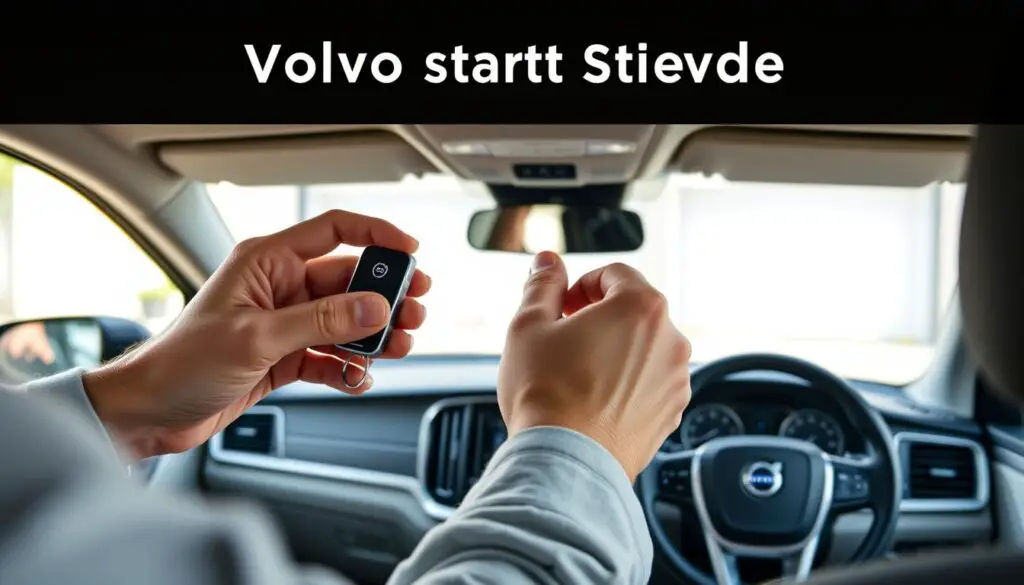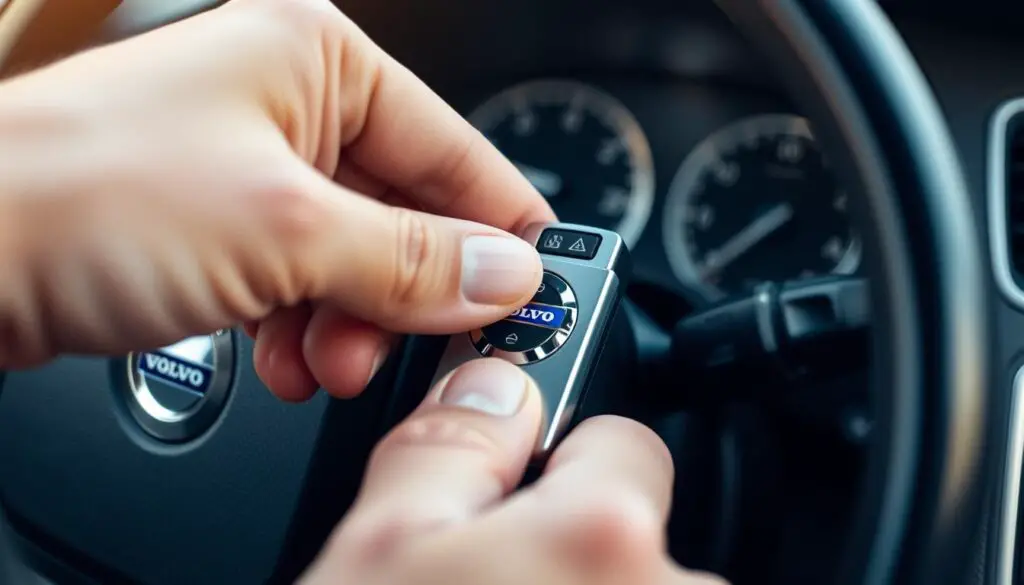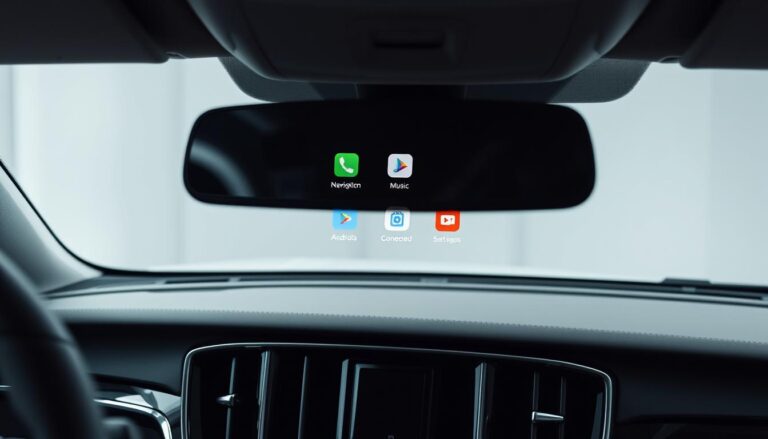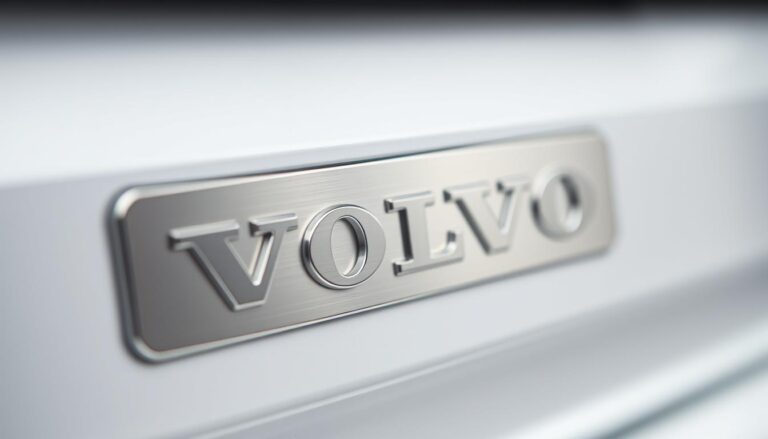Understanding how to properly start your Volvo using the key is crucial for the longevity of the vehicle’s ignition system and overall safety.
Following the correct procedure ensures that your Volvo operates smoothly and efficiently. A proper start can prevent unnecessary wear on the ignition system, reducing the risk of potential issues down the line.
By familiarizing yourself with the correct starting procedure, you can enjoy a safer and more reliable driving experience.
Key Takeaways
- Properly starting your Volvo with the key is essential for safety and longevity.
- Following the correct procedure prevents unnecessary wear on the ignition system.
- A correct start ensures a smoother and more efficient operation.
- Familiarizing yourself with the starting procedure enhances your driving experience.
- A well-maintained ignition system reduces the risk of potential issues.
Understanding Your Volvo Key System
Understanding the intricacies of your Volvo’s key system is crucial for smooth operation. The key system is more than just a means to start your vehicle; it’s an integral part of your Volvo’s security and convenience features.
Different Types of Volvo Keys and Models
Volvo has evolved its key technology over the years, introducing various models and types to enhance user experience. The traditional mechanical key has given way to more sophisticated remote keyless entry systems and keyless ignition. Each type has its unique features and benefits, catering to different Volvo models and user preferences.
| Key Type | Features | Volvo Models |
|---|---|---|
| Mechanical Key | Basic locking and ignition functionality | Older Volvo models |
| Remote Keyless Entry | Remote locking/unlocking, panic button | S60, S80, XC60 |
| Keyless Ignition | Keyless start, push-button ignition | XC90, S90, V60 |
Key Components and Functions
The Volvo key system comprises several key components, including the key fob, ignition switch, and antenna. The key fob contains a transponder that communicates with the vehicle’s immobilizer, ensuring only authorized keys can start the engine. The ignition switch is responsible for activating the vehicle’s electrical systems, while the antenna facilitates communication between the key fob and the vehicle.
Preparing to Start Your Volvo
To ensure a smooth and safe journey, preparing your Volvo is crucial. This involves a series of checks and adjustments to guarantee that you’re ready to hit the road safely.
Safety Checks Before Starting
Before starting your Volvo, perform a few safety checks. Check your surroundings to ensure it’s safe to start the vehicle. Make sure there are no obstacles or people around the vehicle.
Ensuring the Vehicle is in Park or Neutral
It’s vital to ensure your Volvo is in Park (for automatic transmissions) or Neutral (for manual transmissions) before starting. This prevents the vehicle from moving unexpectedly.
Adjusting Your Seat, Mirrors, and Seatbelt
Adjust your seat, rearview mirror, and side mirrors for optimal visibility and comfort. Always wear your seatbelt and ensure all passengers are buckled up.
| Pre-Start Checks | Importance | Action Required |
|---|---|---|
| Safety Checks | High | Check surroundings |
| Transmission Position | Critical | Ensure Park or Neutral |
| Seat, Mirrors, and Seatbelt | Essential | Adjust and fasten |

By following these steps, you’ll be well-prepared to start your Volvo safely and confidently. Remember, safety should always be your top priority when driving.
How to Start Volvo with Key: Step-by-Step Process
Starting your Volvo with the key is a straightforward process that requires attention to detail. To ensure a smooth start, it’s essential to follow the correct sequence of steps. This section will guide you through the process, from inserting the key to what to expect when the engine starts.
Inserting the Key Properly
To start, locate the ignition switch on your Volvo’s steering column. Take the key and align it with the ignition switch, ensuring it’s the correct key for your vehicle. Gently insert the key into the ignition switch until it’s fully seated.

Turning the Ignition
Once the key is inserted, turn it clockwise to the first position. This will activate the vehicle’s electrical systems. Continue turning the key to the second position to start the engine. You may feel a slight resistance as you turn the key.
It’s crucial to turn the key smoothly and avoid forcing it, as this can damage the ignition switch. If the key doesn’t turn easily, check that it’s fully inserted and try again.
What to Expect When the Engine Starts
As you turn the key to the second position, the engine will begin to crank. You may hear a slight humming noise as the engine starts. Once the engine is running, release the key, and it will return to the first position.
Check your dashboard for any warning lights. If any lights remain on or flash, consult your owner’s manual or contact a Volvo service center for assistance.
| Step | Description | Expected Outcome |
|---|---|---|
| 1 | Insert key into ignition | Key is fully seated |
| 2 | Turn key to first position | Electrical systems activate |
| 3 | Turn key to second position | Engine starts |
Starting Your Volvo in Different Weather Conditions
Different weather conditions can significantly impact how you start your Volvo, making it crucial to adapt your techniques. Whether you’re dealing with freezing temperatures or sweltering heat, understanding the best practices for starting your vehicle can ensure a smooth and safe driving experience.
Cold Weather Starting Techniques
In cold weather, starting your Volvo requires some extra care. Make sure your battery is fully charged, as cold temperatures can drain the battery quickly. It’s also a good idea to use the correct type of oil for winter conditions, as it can help your engine turn over more easily. Additionally, avoid using unnecessary electrical accessories before starting the engine to preserve battery power.
Preheating your Volvo can also be beneficial in cold weather. Many modern Volvos come equipped with a preheating system that can be activated remotely, warming up the engine and cabin before you start driving.
Hot Weather Considerations
In hot weather, the primary concern when starting your Volvo is ensuring that your cooling system is functioning properly. Check your coolant levels regularly to prevent overheating. It’s also wise to park your vehicle in shaded areas or use a sunshade to reduce the interior temperature, which can affect the battery and other components.
By being mindful of these factors and adjusting your starting procedures accordingly, you can help extend the life of your Volvo and ensure it starts reliably in various weather conditions.
Troubleshooting Common Starting Issues
Despite the reliability of Volvos, some starting issues are common and can be easily resolved. Understanding these problems can save you time and potentially avoid costly repairs down the line.
Key Not Turning in Ignition
If your key won’t turn in the ignition, it could be due to a few reasons. First, ensure that your vehicle is in Park or Neutral, as this is a safety feature in many Volvos. If the issue persists, check for any debris or dirt in the ignition cylinder that might be hindering the key’s movement. In some cases, the key itself might be worn out or damaged, requiring replacement. For more detailed information on dealing with no-start problems, you can refer to this resource.
Engine Cranks But Doesn’t Start
When the engine cranks but fails to start, it often points to issues with the fuel system or ignition. Check if you have sufficient fuel and if the fuel pump is functioning correctly. A faulty spark plug or ignition coil could also be the culprit, preventing the engine from starting. It’s essential to diagnose the problem systematically to identify the root cause.
Dashboard Warning Lights During Start
Dashboard warning lights during start-up can indicate various issues, ranging from minor problems like a loose gas cap to more serious concerns such as engine or electrical system faults. It’s crucial to consult your Volvo’s manual to understand what each light signifies. If the light persists, it may be wise to have your vehicle inspected by a professional to prevent potential damage.
By addressing these common starting issues, you can ensure your Volvo remains reliable and safe to drive. Regular maintenance and prompt attention to warning signs can help prevent more significant problems from developing.
Maintaining Your Volvo Key and Ignition System
Proper maintenance of your Volvo’s key and ignition system is crucial for ensuring reliable starting and overall vehicle performance. Regular upkeep can prevent common issues and prolong the lifespan of these critical components.
Key Battery Replacement
For Volvos equipped with a key fob, replacing the battery is a simple yet essential task. Typically, the key fob battery needs to be replaced every 2-3 years, depending on usage. To replace the battery, carefully open the key fob, remove the old battery, and insert a new one of the same type. Ensure the key fob is properly closed after replacement to maintain its waterproofing.
Ignition System Care Tips
To maintain your Volvo’s ignition system, avoid using excessive force when turning the key, as this can cause wear on the ignition switch. Regularly cleaning the ignition switch and surrounding area can also help prevent issues. Additionally, be mindful of the key’s condition; a worn or damaged key can cause problems with the ignition system.
When to Seek Professional Help
If you experience persistent issues with your Volvo’s key or ignition system, such as a key that won’t turn or a car that won’t start, it’s time to seek professional assistance. A certified Volvo technician can diagnose and repair complex problems, ensuring your vehicle remains reliable and secure.
Conclusion
Starting your Volvo with a key is a straightforward process once you understand the steps involved and the importance of maintaining your vehicle’s key and ignition system. By following the guidelines outlined in this Volvo starting guide, you can ensure a smooth and safe driving experience.
To recap, it’s crucial to understand your Volvo key system, prepare your vehicle before starting, and be aware of how to handle different weather conditions. Troubleshooting common starting issues and maintaining your key and ignition system are also vital for the longevity of your Volvo.
By adhering to the steps outlined in this guide on How to Start Volvo with Key, you can avoid potential problems and ensure your vehicle runs efficiently. Regular maintenance and checks will help prevent issues and keep your Volvo in top condition.
FAQ
What type of key does my Volvo use?
Volvo vehicles use either a traditional key or a remote keyless entry (RKE) key, also known as a smart key. The type of key used depends on the model and year of your Volvo.
How do I know if my Volvo key battery is dead?
If your Volvo key battery is dead, you may experience difficulty starting the vehicle or the key fob may not function properly. Check your owner’s manual for guidance on replacing the battery or consult a Volvo dealership or a professional locksmith.
Why won’t my Volvo key turn in the ignition?
If your Volvo key won’t turn in the ignition, it could be due to a worn-out key, a problem with the ignition cylinder, or the vehicle being in the wrong gear. Check that the vehicle is in park or neutral and try turning the key again. If the issue persists, consult a Volvo dealership or a professional mechanic.
Can I start my Volvo with a dead key fob battery?
Yes, you can still start your Volvo even with a dead key fob battery. Most Volvo models have a backup start feature that allows you to start the vehicle by holding the key fob against the start/stop button or by using the traditional key in the ignition.
How do I maintain my Volvo’s ignition system?
To maintain your Volvo’s ignition system, avoid using excessive force when turning the key, keep the ignition cylinder clean, and avoid inserting foreign objects into the ignition. Regularly check and replace the key battery as needed.
What should I do if my Volvo’s engine cranks but doesn’t start?
If your Volvo’s engine cranks but doesn’t start, check the fuel level, ensure the parking brake is fully disengaged, and try starting the vehicle again. If the issue persists, consult a Volvo dealership or a professional mechanic to diagnose the problem.
Are there any special considerations for starting my Volvo in extreme weather?
Yes, when starting your Volvo in extreme weather, make sure to follow the guidelines outlined in your owner’s manual. In cold weather, let the engine warm up before driving, and in hot weather, avoid leaving your vehicle unattended with the engine running.



